My ambition is handicapped by laziness. -C. Bukowski Me gustan las personas desesperadas con mentes rotas y destinos rotos. Están llenos de sorpresas y explosiones. -C. Bukowski. I love cats. Born in the early 80's, raised in the 90's. I like Nature, Autumn, books, landscapes, cold days, cloudy Windy days, space, Science, Paleontology, Biology, Astronomy, History, Social Sciences, Drawing, spending the night watching at the stars, Rick & Morty. I'm a lazy ass.
222 posts
Latest Posts by monstrous-mind - Page 6

Puraten10 on Instagram

NASA’s TESS Mission Hopes to Find Exoplanets Beyond Our Solar System : The worlds orbiting other stars are called “exoplanets,” and they come in a wide variety of sizes, from gas giants larger than Jupiter to small, rocky planets about as big around as Earth or Mars. This rocky super-Earth is an illustration of the type of planets future telescopes, like NASA’s TESS, hope to find outside our solar system. (via NASA)
😻⛄❄🌨


String Theory
String theory is a fascinating physical model in which all particles are replaced by one-dimensional objects known as strings. This theory says that we live in more than four dimensions, but we can not perceive them.
String theory, is a complete theory and unites quantum physics with Einstein’s general relativity.

On distance scales larger than the string scale, a string looks just like an ordinary particle, with its mass, charge, and other properties determined by the vibrational state of the string. In string theory, one of the many vibrational states of the string corresponds to the graviton, a quantum mechanical particle that carries gravitational force. Thus string theory is a theory of quantum gravity.

According to string theory, the reason we can not observe these dimensions is because they are very small and compact (smaller than the plank length 10 −35)


Compactification is one way of modifying the number of dimensions in a physical theory. In compactification, some of the extra dimensions are assumed to “close up” on themselves to form circles. In the limit where these curled up dimensions become very small, one obtains a theory in which spacetime has effectively a lower number of dimensions. A standard analogy for this is to consider a multidimensional object such as a garden hose. If the hose is viewed from a sufficient distance, it appears to have only one dimension, its length. However, as one approaches the hose, one discovers that it contains a second dimension, its circumference. Thus, an ant crawling on the surface of the hose would move in two dimensions.

Compactification can be used to construct models in which spacetime is effectively four-dimensional. However, not every way of compactifying the extra dimensions produces a model with the right properties to describe nature. In a viable model of particle physics, the compact extra dimensions must be shaped like a Calabi–Yau manifold

Another approach to reducing the number of dimensions is the so-called brane-world scenario. In this approach, physicists assume that the observable universe is a four-dimensional subspace of a higher dimensional space. In such models, the force-carrying bosons of particle physics arise from open strings with endpoints attached to the four-dimensional subspace, while gravity arises from closed strings propagating through the larger ambient space. This idea plays an important role in attempts to develop models of real world physics based on string theory, and it provides a natural explanation for the weakness of gravity compared to the other fundamental forces

One notable feature of string theories is that these theories require extra dimensions of spacetime for their mathematical consistency. In bosonic string theory, spacetime is 26-dimensional, while in superstring theory it is 10-dimensional, and in M-theory it is 11-dimensional. In order to describe real physical phenomena using string theory, one must therefore imagine scenarios in which these extra dimensions would not be observed in experiments.

The original version of string theory was bosonic string theory, but this version described only bosons, a class of particles which transmit forces between the matter particles, or fermions. Bosonic string theory was eventually superseded by theories called superstring theories. These theories describe both bosons and fermions, and they incorporate a theoretical idea called supersymmetry.

This is a mathematical relation that exists in certain physical theories between the bosons and fermions. In theories with supersymmetry, each boson has a counterpart which is a fermion, and vice versa.

There are several versions of superstring theory: type I, type IIA, type IIB, and two flavors of heterotic string theory (SO(32) and E8×E8). The different theories allow different types of strings, and the particles that arise at low energies exhibit different symmetries. For example, the type I theory includes both open strings (which are segments with endpoints) and closed strings (which form closed loops), while types IIA, IIB and heterotic include only closed strings.

Branes
In string theory and other related theories, a brane is a physical object that generalizes the notion of a point particle to higher dimensions. For instance, a point particle can be viewed as a brane of dimension zero, while a string can be viewed as a brane of dimension one. It is also possible to consider higher-dimensional branes. In dimension p, these are called p-branes. The word brane comes from the word “membrane” which refers to a two-dimensional brane
In string theory, D-branes are an important class of branes that arise when one considers open strings

D-branes are typically classified by their spatial dimension, which is indicated by a number written after the D. A D0-brane is a single point, a D1-brane is a line (sometimes called a “D-string”), a D2-brane is a plane, and a D25-brane fills the highest-dimensional space considered in bosonic string theory. There are also instantonic D(–1)-branes, which are localized in both space and time.
Duality
A striking fact about string theory is that the different versions of the theory prove to be highly non-trivial in relation. One of the relationships that exist between different theories is called S-duality. This is a relationship that says that a collection of interacting particles in a theory may in some cases be viewed as a collection of weak interacting particles in a completely different theory. Approximately, a collection of particles is said to interact strongly if they combine and deteriorate frequently and interact poorly if they do so infrequently. The type I string theory turns out to be equivalent by S-duality to the heterotic string theory SO (32). Likewise, type IIB string theory is related to itself in a non-trivial way by S-duality

Another relationship between different string theories is T-duality. Here one considers strings propagating around a circular extra dimension. T-duality states that a string propagating around a circle of radius R is equivalent to a string propagating around a circle of radius 1/R in the sense that all observable quantities in one description are identified with quantities in the dual description. For example, a string has momentum as it propagates around a circle, and it can also wind around the circle one or more times. The number of times the string winds around a circle is called the winding number. If a string has momentum p and winding number n in one description, it will have momentum n and winding number p in the dual description. For example, type IIA string theory is equivalent to type IIB string theory via T-duality, and the two versions of heterotic string theory are also related by T-duality.

Black holes
In general relativity, a black hole is defined as a region of spacetime in which the gravitational field is so strong that no particle or radiation can escape. In the currently accepted models of stellar evolution, black holes are thought to arise when massive stars undergo gravitational collapse, and many galaxies are thought to contain supermassive black holes at their centers.

Black holes are also important for theoretical reasons, as they present profound challenges for theorists attempting to understand the quantum aspects of gravity. String theory has proved to be an important tool for investigating the theoretical properties of black holes because it provides a framework in which theorists can study their thermodynamics.

The big bang theory doesn’t offer any explanation for what started the original expansion of the universe. This is a major theoretical question for cosmologists, and many are applying the concepts of string theory in attempts to answer it. One controversial conjecture is a cyclic universe model called the ekpyrotic universe theory, which suggests that our own universe is the result of branes colliding with each other.
Some things that string theory could explain: Neutrinos would have to have mass (minimum), Decay of Proton, New fields of force (short and long range) defined by some forms of calabi-yau, Explanations for Dark Matter.
sources: x, x, x, x, x, x

String theory is a very complex and broad area, so this post is only a summary. To better understand, I suggest you read Brian Greene’s books: The Elegant Universe and The Fabric of the Cosmo.
🐈🍁🍂🐾


My favorite season



















Frozen: Ice on Earth and Well Beyond

Icy Hearts: A heart-shaped calving front of a glacier in Greenland (left) and Pluto’s frozen plains (right). Credits: NASA/Maria-Jose Viñas and NASA/APL/SwRI
From deep below the soil at Earth’s polar regions to Pluto’s frozen heart, ice exists all over the solar system…and beyond. From right here on our home planet to moons and planets millions of miles away, we’re exploring ice and watching how it changes. Here’s 10 things to know:
1. Earth’s Changing Ice Sheets

An Antarctic ice sheet. Credit: NASA
Ice sheets are massive expanses of ice that stay frozen from year to year and cover more than 6 million square miles. On Earth, ice sheets extend across most of Greenland and Antarctica. These two ice sheets contain more than 99 percent of the planet’s freshwater ice. However, our ice sheets are sensitive to the changing climate.
Data from our GRACE satellites show that the land ice sheets in both Antarctica and Greenland have been losing mass since at least 2002, and the speed at which they’re losing mass is accelerating.
2. Sea Ice at Earth’s Poles

Earth’s polar oceans are covered by stretches of ice that freezes and melts with the seasons and moves with the wind and ocean currents. During the autumn and winter, the sea ice grows until it reaches an annual maximum extent, and then melts back to an annual minimum at the end of summer. Sea ice plays a crucial role in regulating climate – it’s much more reflective than the dark ocean water, reflecting up to 70 percent of sunlight back into space; in contrast, the ocean reflects only about 7 percent of the sunlight that reaches it. Sea ice also acts like an insulating blanket on top of the polar oceans, keeping the polar wintertime oceans warm and the atmosphere cool.
Some Arctic sea ice has survived multiple years of summer melt, but our research indicates there’s less and less of this older ice each year. The maximum and minimum extents are shrinking, too. Summertime sea ice in the Arctic Ocean now routinely covers about 30-40 percent less area than it did in the late 1970s, when near-continuous satellite observations began. These changes in sea ice conditions enhance the rate of warming in the Arctic, already in progress as more sunlight is absorbed by the ocean and more heat is put into the atmosphere from the ocean, all of which may ultimately affect global weather patterns.
3. Snow Cover on Earth

Snow extends the cryosphere from the poles and into more temperate regions.
Snow and ice cover most of Earth’s polar regions throughout the year, but the coverage at lower latitudes depends on the season and elevation. High-elevation landscapes such as the Tibetan Plateau and the Andes and Rocky Mountains maintain some snow cover almost year-round. In the Northern Hemisphere, snow cover is more variable and extensive than in the Southern Hemisphere.
Snow cover the most reflective surface on Earth and works like sea ice to help cool our climate. As it melts with the seasons, it provides drinking water to communities around the planet.
4. Permafrost on Earth

Tundra polygons on Alaska’s North Slope. As permafrost thaws, this area is likely to be a source of atmospheric carbon before 2100. Credit: NASA/JPL-Caltech/Charles Miller
Permafrost is soil that stays frozen solid for at least two years in a row. It occurs in the Arctic, Antarctic and high in the mountains, even in some tropical latitudes. The Arctic’s frozen layer of soil can extend more than 200 feet below the surface. It acts like cold storage for dead organic matter – plants and animals.
In parts of the Arctic, permafrost is thawing, which makes the ground wobbly and unstable and can also release those organic materials from their icy storage. As the permafrost thaws, tiny microbes in the soil wake back up and begin digesting these newly accessible organic materials, releasing carbon dioxide and methane, two greenhouse gases, into the atmosphere.
Two campaigns, CARVE and ABoVE, study Arctic permafrost and its potential effects on the climate as it thaws.
5. Glaciers on the Move

Did you know glaciers are constantly moving? The masses of ice act like slow-motion rivers, flowing under their own weight. Glaciers are formed by falling snow that accumulates over time and the slow, steady creep of flowing ice. About 10 percent of land area on Earth is covered with glacial ice, in Greenland, Antarctica and high in mountain ranges; glaciers store much of the world’s freshwater.
Our satellites and airplanes have a bird’s eye view of these glaciers and have watched the ice thin and their flows accelerate, dumping more freshwater ice into the ocean, raising sea level.
6. Pluto’s Icy Heart

The nitrogen ice glaciers on Pluto appear to carry an intriguing cargo: numerous, isolated hills that may be fragments of water ice from Pluto’s surrounding uplands. NASA/Johns Hopkins University Applied Physics Laboratory/Southwest Research Institute
Pluto’s most famous feature – that heart! – is stone cold. First spotted by our New Horizons spacecraft in 2015, the heart’s western lobe, officially named Sputnik Planitia, is a deep basin containing three kinds of ices – frozen nitrogen, methane and carbon monoxide.
Models of Pluto’s temperatures show that, due the dwarf planet’s extreme tilt (119 degrees compared to Earth’s 23 degrees), over the course of its 248-year orbit, the latitudes near 30 degrees north and south are the coldest places – far colder than the poles. Ice would have naturally formed around these latitudes, including at the center of Sputnik Planitia.
New Horizons also saw strange ice formations resembling giant knife blades. This “bladed terrain” contains structures as tall as skyscrapers and made almost entirely of methane ice, likely formed as erosion wore away their surfaces, leaving dramatic crests and sharp divides. Similar structures can be found in high-altitude snowfields along Earth’s equator, though on a very different scale.
7. Polar Ice on Mars

This image, combining data from two instruments aboard our Mars Global Surveyor, depicts an orbital view of the north polar region of Mars. Credit: NASA/JPL-Caltech/MSSS
Mars has bright polar caps of ice easily visible from telescopes on Earth. A seasonal cover of carbon dioxide ice and snow advances and retreats over the poles during the Martian year, much like snow cover on Earth.

This animation shows a side-by-side comparison of CO2 ice at the north (left) and south (right) Martian poles over the course of a typical year (two Earth years). This simulation isn’t based on photos; instead, the data used to create it came from two infrared instruments capable of studying the poles even when they’re in complete darkness. This data were collected by our Mars Reconnaissance Orbiter, and Mars Global Surveyor. Credit: NASA/JPL-Caltech
During summertime in the planet’s north, the remaining northern polar cap is all water ice; the southern cap is water ice as well, but remains covered by a relatively thin layer of carbon dioxide ice even in summertime.
Scientists using radar data from our Mars Reconnaissance Orbiter found a record of the most recent Martian ice age in the planet’s north polar ice cap. Research indicates a glacial period ended there about 400,000 years ago. Understanding seasonal ice behavior on Mars helps scientists refine models of the Red Planet’s past and future climate.
8. Ice Feeds a Ring of Saturn

Wispy fingers of bright, icy material reach tens of thousands of kilometers outward from Saturn’s moon Enceladus into the E ring, while the moon’s active south polar jets continue to fire away. Credit: NASA/JPL/Space Science Institute
Saturn’s rings and many of its moons are composed of mostly water ice – and one of its moons is actually creating a ring. Enceladus, an icy Saturnian moon, is covered in “tiger stripes.” These long cracks at Enceladus’ South Pole are venting its liquid ocean into space and creating a cloud of fine ice particles over the moon’s South Pole. Those particles, in turn, form Saturn’s E ring, which spans from about 75,000 miles (120,000 kilometers) to about 260,000 miles (420,000 kilometers) above Saturn’s equator. Our Cassini spacecraft discovered this venting process and took high-resolution images of the system.

Jets of icy particles burst from Saturn’s moon Enceladus in this brief movie sequence of four images taken on Nov. 27, 2005. Credit: NASA/JPL/Space Science Institute
9. Ice Rafts on Europa

View of a small region of the thin, disrupted, ice crust in the Conamara region of Jupiter’s moon Europa showing the interplay of surface color with ice structures. Credit: NASA/JPL/University of Arizona
The icy surface of Jupiter’s moon Europa is crisscrossed by long fractures. During its flybys of Europa, our Galileo spacecraft observed icy domes and ridges, as well as disrupted terrain including crustal plates that are thought to have broken apart and “rafted” into new positions. An ocean with an estimated depth of 40 to 100 miles (60 to 150 kilometers) is believed to lie below that 10- to 15-mile-thick (15 to 25 km) shell of ice.
The rafts, strange pits and domes suggest that Europa’s surface ice could be slowly turning over due to heat from below. Our Europa Clipper mission, targeted to launch in 2022, will conduct detailed reconnaissance of Europa to see whether the icy moon could harbor conditions suitable for life.
10. Crater Ice on Our Moon

The image shows the distribution of surface ice at the Moon’s south pole (left) and north pole (right), detected by our Moon Mineralogy Mapper instrument. Credit: NASA
In the darkest and coldest parts of our Moon, scientists directly observed definitive evidence of water ice. These ice deposits are patchy and could be ancient. Most of the water ice lies inside the shadows of craters near the poles, where the warmest temperatures never reach above -250 degrees Fahrenheit. Because of the very small tilt of the Moon’s rotation axis, sunlight never reaches these regions.
A team of scientists used data from a our instrument on India’s Chandrayaan-1 spacecraft to identify specific signatures that definitively prove the water ice. The Moon Mineralogy Mapper not only picked up the reflective properties we’d expect from ice, but was able to directly measure the distinctive way its molecules absorb infrared light, so it can differentiate between liquid water or vapor and solid ice.
With enough ice sitting at the surface – within the top few millimeters – water would possibly be accessible as a resource for future expeditions to explore and even stay on the Moon, and potentially easier to access than the water detected beneath the Moon’s surface.
11. Bonus: Icy World Beyond Our Solar System!

With an estimated temperature of just 50K, OGLE-2005-BLG-390L b is the chilliest exoplanet yet discovered. Pictured here is an artist’s concept. Credit: NASA
OGLE-2005-BLG-390Lb, the icy exoplanet otherwise known as Hoth, orbits a star more than 20,000 light years away and close to the center of our Milky Way galaxy. It’s locked in the deepest of deep freezes, with a surface temperature estimated at minus 364 degrees Fahrenheit (minus 220 Celsius)!
Make sure to follow us on Tumblr for your regular dose of space: http://nasa.tumblr.com.
🍁🍂🌄

Autumn sky
🍂🍁💀

🍁🍂🌄
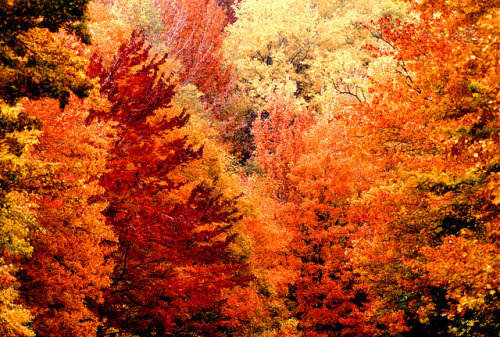

“If man had no eternal consciousness, if, at the bottom of everything, there were merely a wild seething force producing everything, both large and trifling, in the storm of dark passions, if the bottomless void that nothing can fill underlay all things, what would life be but despair?”
- Albert Camus, quoting Kierkegaard in “Sysiphos”
🍁🍂


(via 500px / …… by Fabrizio Riccardo Castorina)

cozy autumn days
A Mesmerizing Model of Monster Black Holes
Just about every galaxy the size of our Milky Way (or bigger) has a supermassive black hole at its center. These objects are ginormous — hundreds of thousands to billions of times the mass of the Sun! Now, we know galaxies merge from time to time, so it follows that some of their black holes should combine too. But we haven’t seen a collision like that yet, and we don’t know exactly what it would look like.

A new simulation created on the Blue Waters supercomputer — which can do 13 quadrillion calculations per second, 3 million times faster than the average laptop — is helping scientists understand what kind of light would be produced by the gas around these systems as they spiral toward a merger.
The new simulation shows most of the light produced around these two black holes is UV or X-ray light. We can’t see those wavelengths with our own eyes, but many telescopes can. Models like this could tell the scientists what to look for.
You may have spotted the blank circular region between the two black holes. No, that’s not a third black hole. It’s a spot that wasn’t modeled in this version of the simulation. Future models will include the glowing gas passing between the black holes in that region, but the researchers need more processing power. The current version already required 46 days!

The supermassive black holes have some pretty nifty effects on the light created by the gas in the system. If you view the simulation from the side, you can see that their gravity bends light like a lens. When the black holes are lined up, you even get a double lens!
But what would the view be like from between two black holes? In the 360-degree video above, the system’s gas has been removed and the Gaia star catalog has been added to the background. If you watch the video in the YouTube app on your phone, you can moved the screen around to explore this extreme vista. Learn more about the new simulation here.
Make sure to follow us on Tumblr for your regular dose of space: http://nasa.tumblr.com.


source






🔭🌃🌌🛰
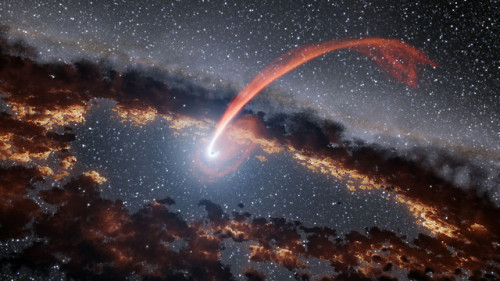
Astronomers Detect Matter Falling into Black Hole
University of Leicester’s Professor Ken Pounds and co-authors report the detection of matter falling into a black hole at 30% of the speed of light.

It is now well established that a supermassive black hole lies in the center of most galaxies, and further that it accretes matter through a disk.
With sufficient matter (interstellar gas clouds or even isolated stars) falling into the black hole, these can become extremely luminous, and are seen as a quasar or active galactic nucleus (AGN).

The orbit of matter around the black hole is often assumed to be aligned with the rotation of the black hole, but there is no compelling reason for this to be the case. In fact, the reason we have summer and winter is that the Earth’s daily rotation does not line up with its yearly orbit around the Sun.
Until now it has been unclear how misaligned rotation might affect the in-fall of matter. This is particularly relevant to the feeding of supermassive black holes since matter can fall in from any direction.

Using data from ESA’s XMM-Newton X-ray Observatory, Professor Pounds and colleagues looked at X-ray spectra from PG1211+143, a Seyfert galaxy (characterized by a very bright AGN resulting from the presence of the massive black hole at its nucleus) located in the constellation Coma Berenices, about one billion light-years away.

The team found the spectra to be strongly red-shifted, showing the observed matter to be falling into PG1211+143’s black hole at the enormous speed of 30% of the speed of light, or around 62,000 miles per second (100,000 km per second).
The gas has almost no rotation around the black hole, and is detected extremely close to it in astronomical terms, at a distance of only 20 times the black hole’s size (its event horizon, the boundary of the region where escape is no longer possible).
“The galaxy we were observing with XMM-Newton has a 40-million-solar-mass black hole which is very bright and evidently well fed,” Professor Pounds said.

“Indeed some 15 years ago we detected a powerful wind indicating the black hole was being over-fed. While such winds are now found in many active galaxies, PG1211+143 has now yielded another ‘first,’ with the detection of matter plunging directly into the black hole itself.”
“We were able to follow an Earth-sized clump of matter for about a day, as it was pulled towards the black hole, accelerating to a third of the velocity of light before being swallowed up by the hole.” source

gateway to autumn (via All sizes | Gate to Autumn | Flickr - Photo Sharing!)

🔭🌃🌌

Alnitak Region with the Horse Head and Flame Nebulae
by Warren Keller
🌄🍁🍂🌫🎃

🌄🍁🍂🌫🎃


🎃 kitty and her pumpkin coven 🎃

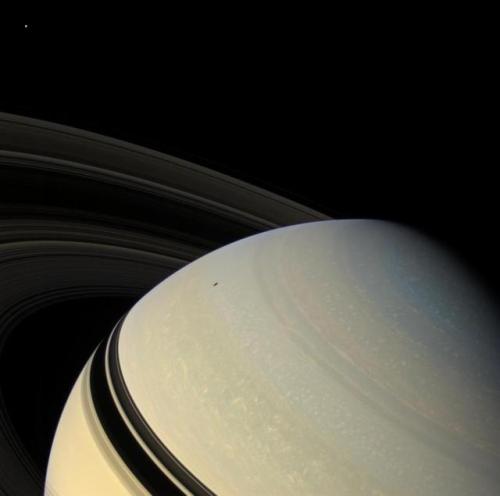
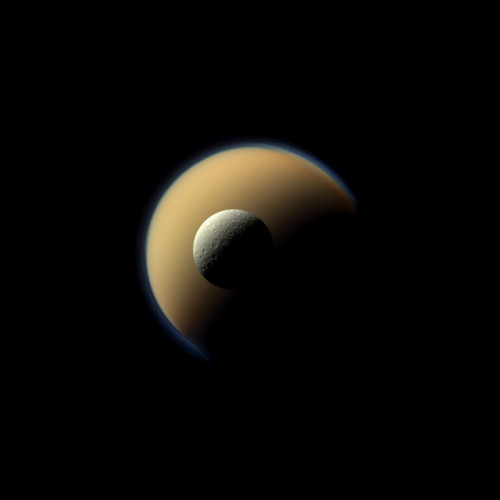
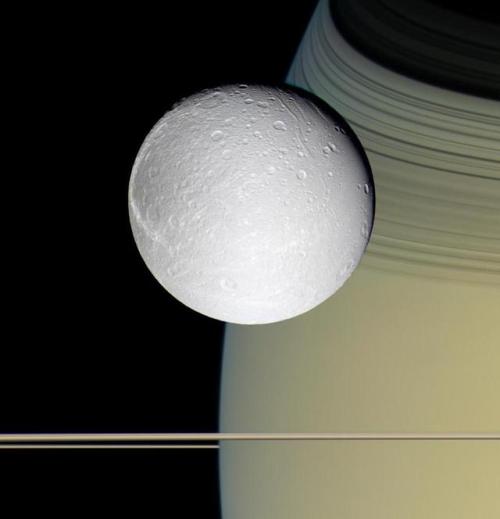
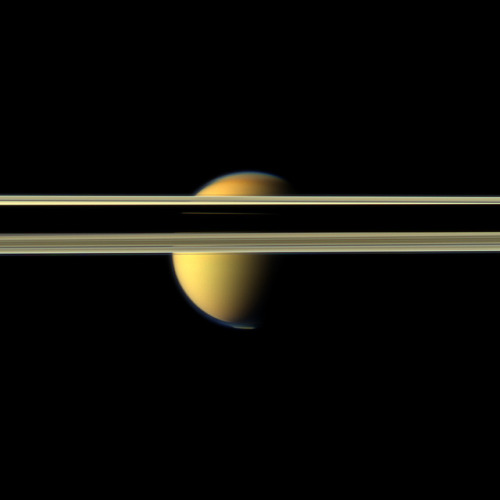
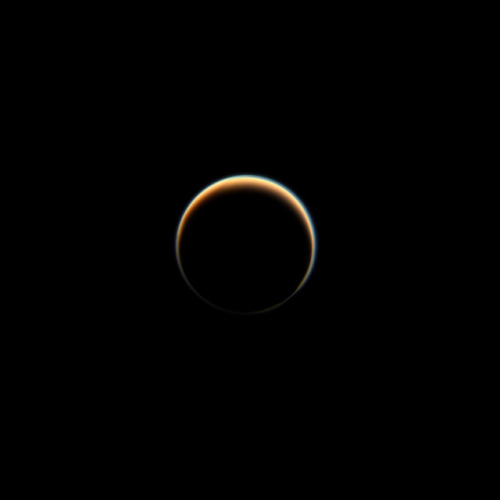
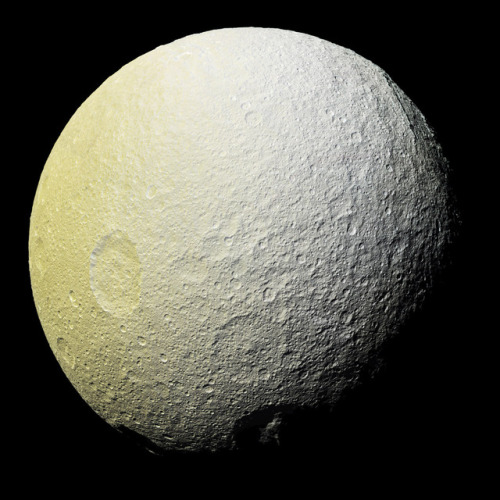
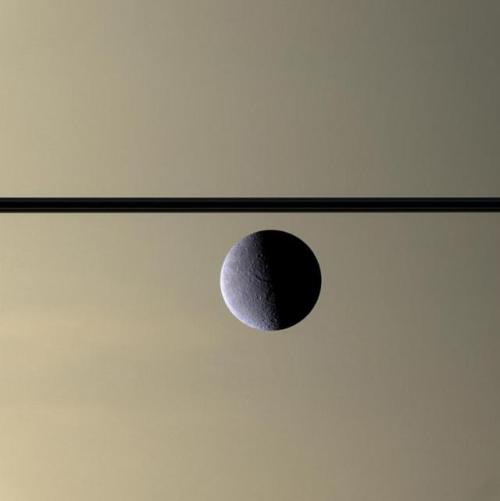

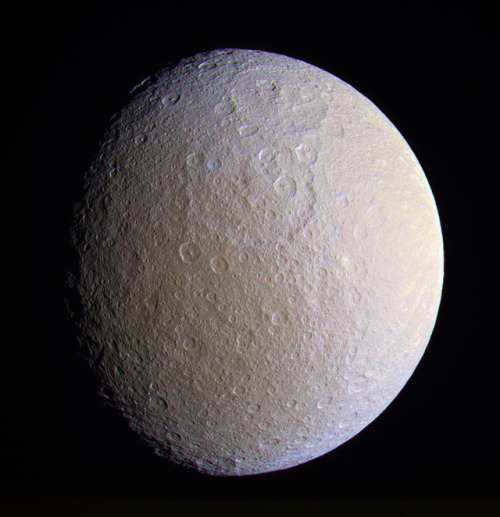
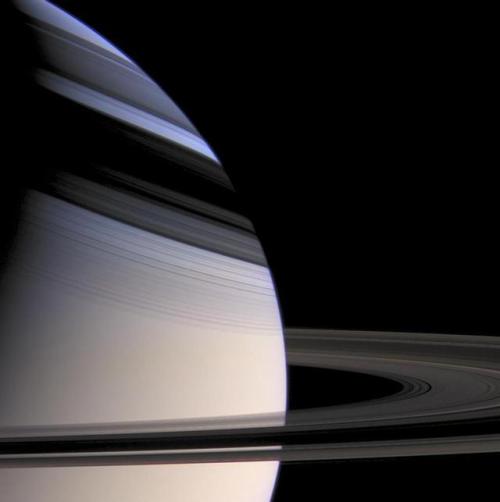
Saturn and its moons
Image credit: NASA/JPL-Caltech
What’s Up For September 2018?
Outstanding views Venus, Jupiter, Saturn and Mars with the naked eye!

You’ll have to look quickly after sunset to catch Venus. And through binoculars or a telescope, you’ll see Venus’s phase change dramatically during September - from nearly half phase to a larger thinner crescent!

Jupiter, Saturn and Mars continue their brilliant appearances this month. Look southwest after sunset.

Use the summer constellations help you trace the Milky Way.

Sagittarius: where stars and some brighter clumps appear as steam from the teapot.

Aquila: where the Eagle’s bright Star Altair, combined with Cygnus’s Deneb, and Lyra’s Vega mark the Summer Triangle.

Cassiopeia, the familiar “w”- shaped constellation completes the constellation trail through the Summer Milky Way. Binoculars will reveal double stars, clusters and nebulae.

Between September 12th and the 20th, watch the Moon pass from near Venus, above Jupiter, to the left of Saturn and finally above Mars!

Both Neptune and brighter Uranus can be spotted with some help from a telescope this month.

Look at about 1:00 a.m. local time or later in the southeastern sky. You can find Mercury just above Earth’s eastern horizon shortly before sunrise. Use the Moon as your guide on September 7 and 8th.

And although there are no major meteor showers in September, cometary dust appears in another late summer sight, the morning Zodiacal light. Try looking for it in the east on moonless mornings very close to sunrise. To learn more about the Zodiacal light, watch “What’s Up” from March 2018.

Watch the full What’s Up for September Video:
There are so many sights to see in the sky. To stay informed, subscribe to our What’s Up video series on Facebook.
Make sure to follow us on Tumblr for your regular dose of space: http://nasa.tumblr.com